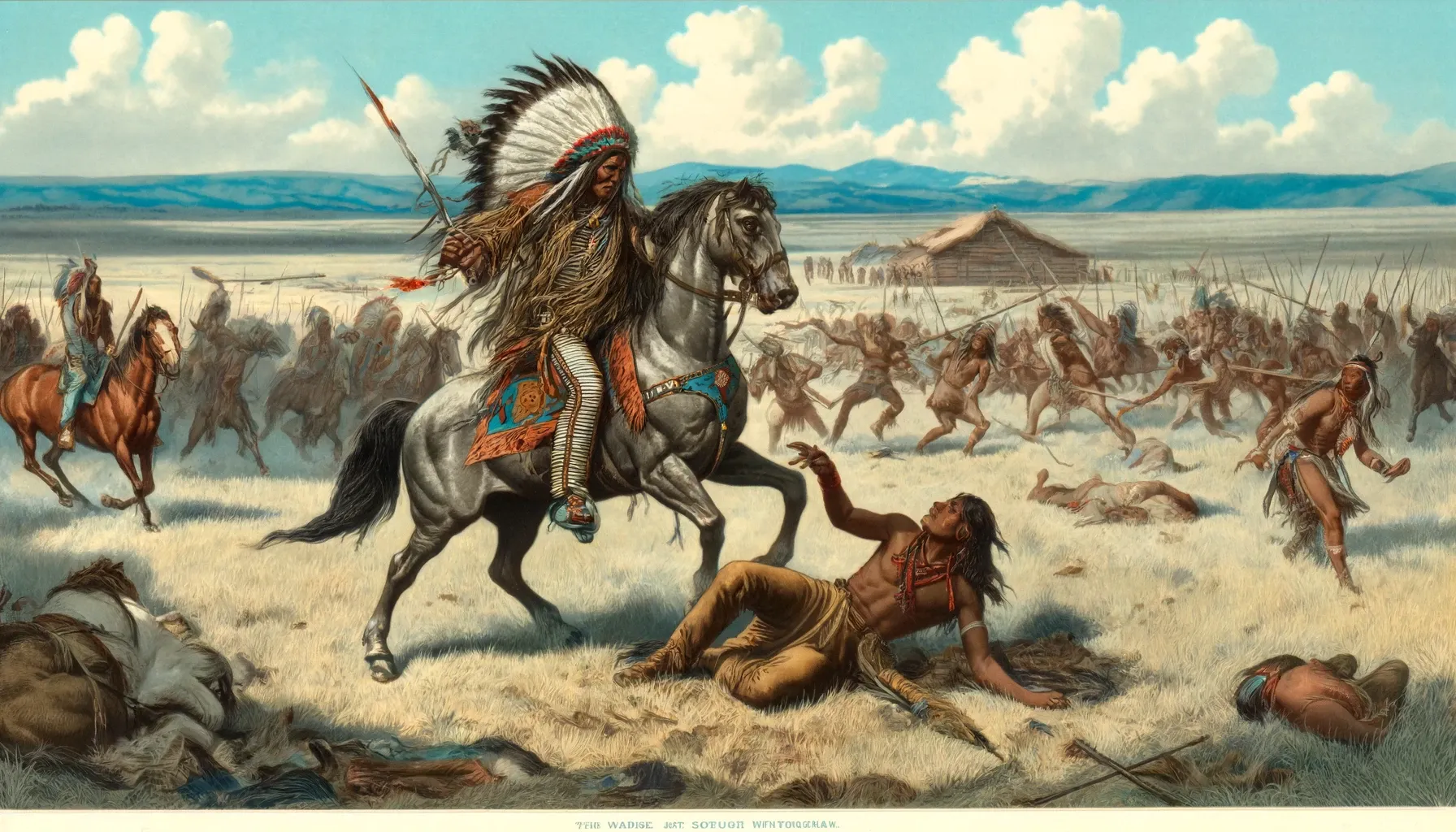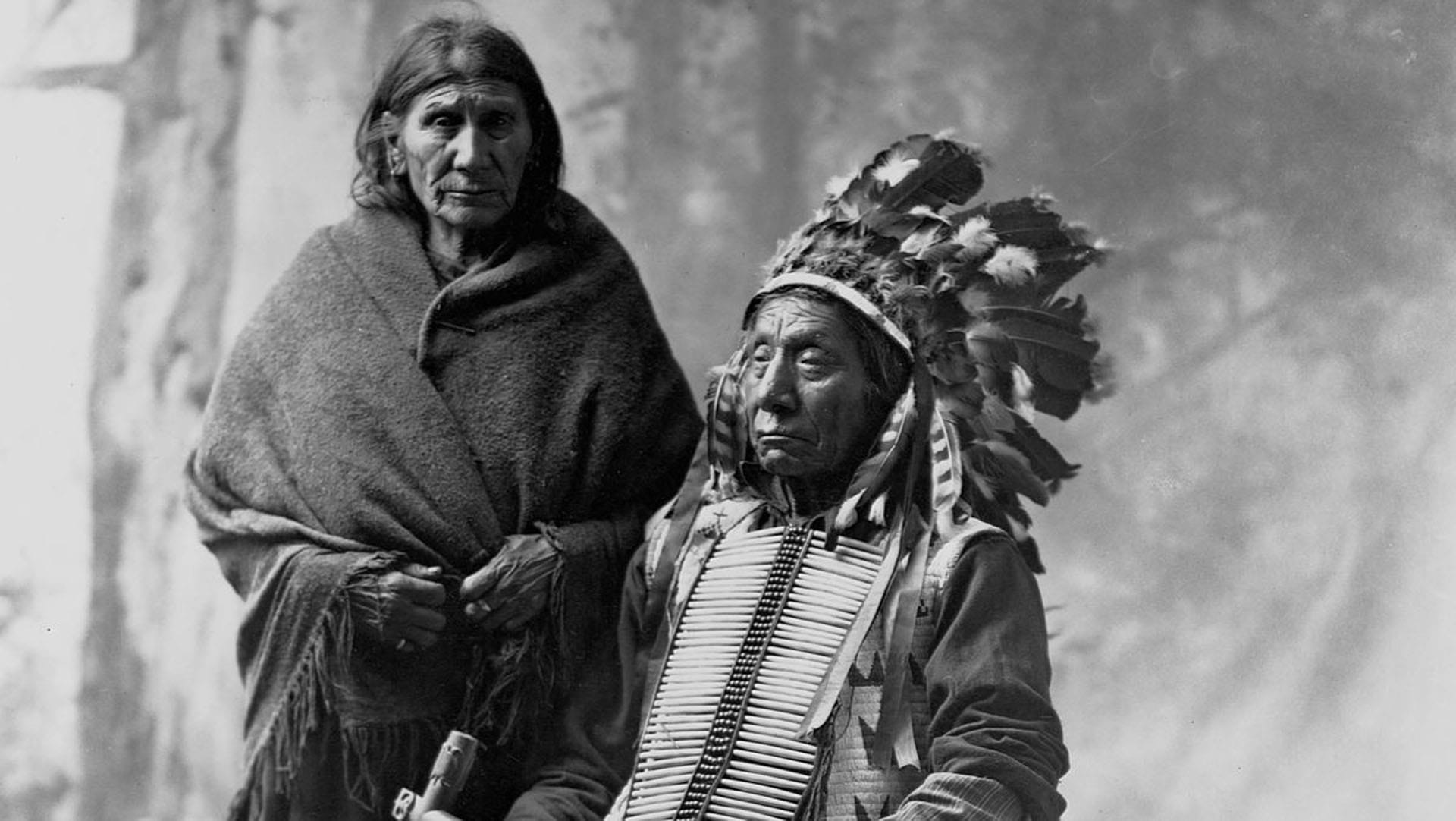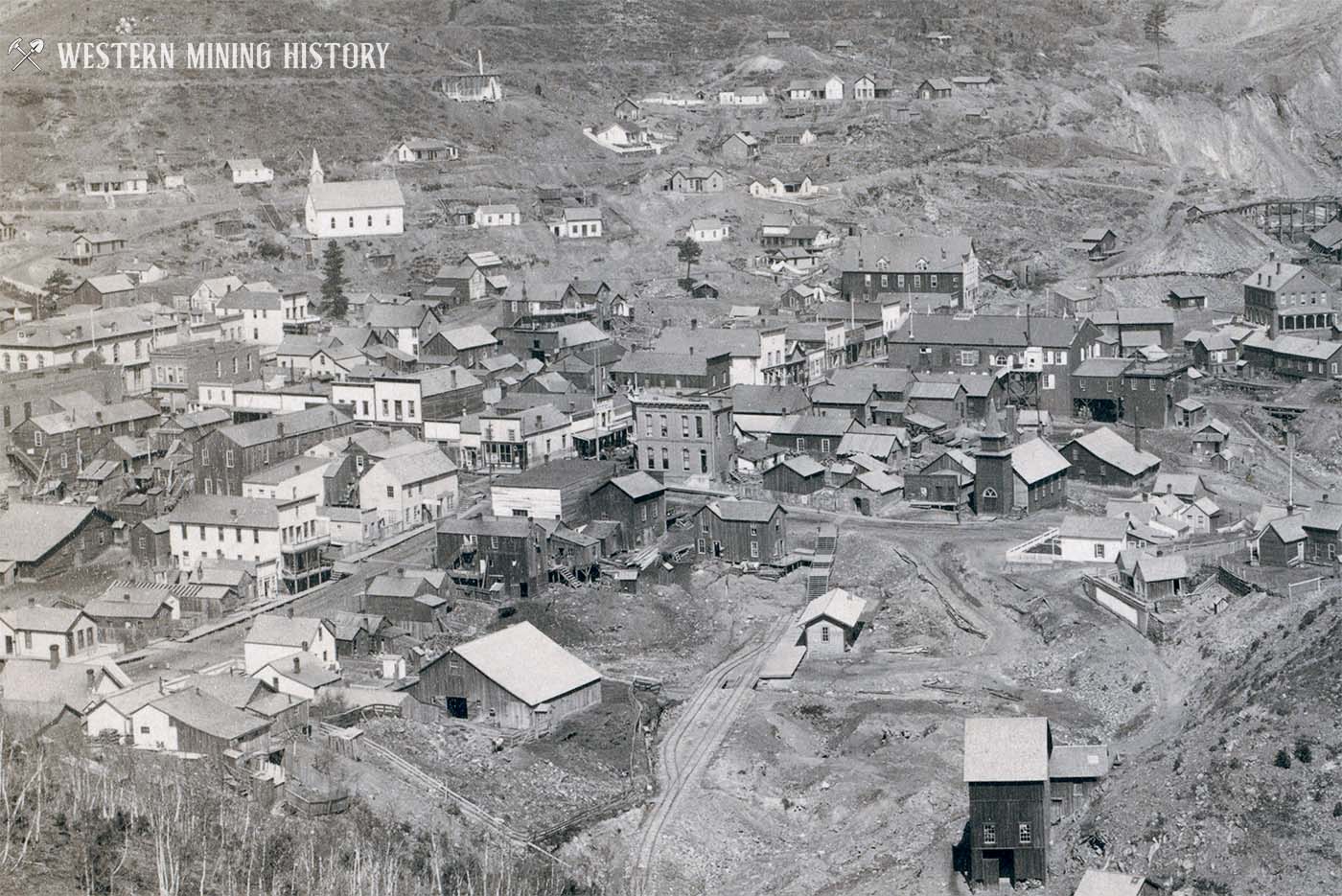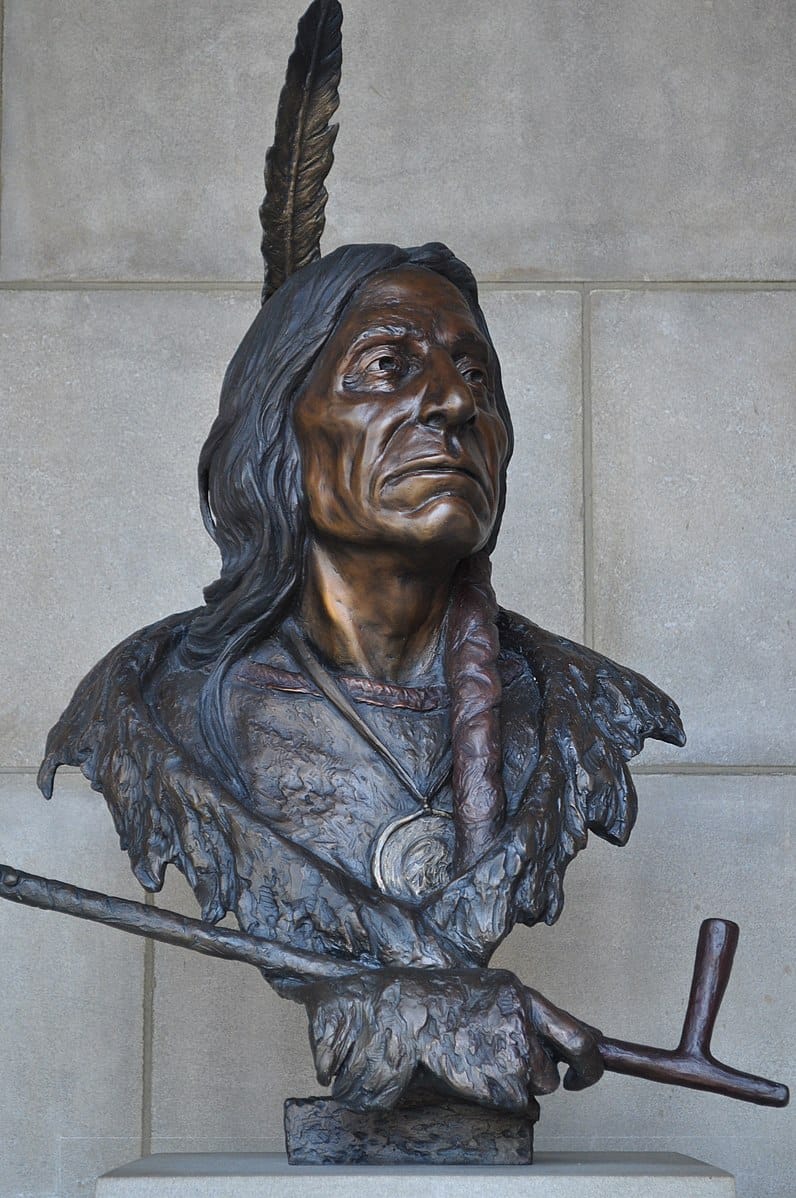The Triumphant Chief Red Cloud
Red Cloud's dream of a peaceful coexistence between the Sioux and white settlers didn't pan out. The U.S. government kept breaking treaties whenever it suited them and pushed to confine the Sioux to more minor reservations. The Dawes Act of 1887 was a big blow, breaking up the Great Sioux Reservation. Red Cloud fought against this but didn't go for armed rebellion. Instead, he helped his community adapt to life under the reservation system. Red Cloud passed away peacefully in 1909 at Pine Ridge Reservation in South Dakota, leaving behind a legacy of leadership and resilience.
His Early Years

Red Cloud was born in 1822 near what is now North Platte, Nebraska, by the Blue Water Creek near the Platte River. His father was Lone Man, a Brule chief within the Teton Sioux, and his mother, Walks-as-She-Thinks, was from the Oglala Sioux. They named him Makhpiya-luta, or Red Cloud, inspired by a red streak in the sky—probably a meteor—his people saw as a sign from the Great Spirit.
When Red Cloud was just three years old, his father died, likely due to alcoholism made worse by cheap whiskey from white traders. After that, his mother and her family raised him. His uncles, Chief Old Smoke and White Hawk played major roles in his upbringing. He shaped his understanding of his culture and leadership this time in his life.
As a kid, Red Cloud was a standout in sports and martial games like "King of the Hill," where he honed his stealth and strategic thinking skills. These nighttime games were essential in developing his abilities in archery and horseback riding. His riding skills improved even more when his uncle gave him a colt. At around 16, Red Cloud joined a raid against the Pawnee to avenge his cousin's death. This was his first taste of combat, and he earned respect in his community for his bravery and for claiming his first scalp. This act was more about bravery—counting the coup—than killing.
These early experiences laid the foundation for Red Cloud's leadership and tactical skills, which he would later use in conflicts and negotiations with the U.S. government.

In Sioux culture, counting coups is a big deal. It's all about showing bravery and skill without killing. The tradition involves touching an enemy with an object or even a hand without causing death. This act shows the warrior's courage and skill because it highlights that the enemy could have been killed but was spared. A great example is the legend of "The Sioux who Married the Crow Chief's Daughter," where Chief Big Eagle goes into battle with only a coup stick, avoiding killing his enemies to prove his valor and mastery.
Red Cloud's early life was filled with childhood war games and early battles, which underscored the importance of counting coup. These experiences sharpened his physical abilities and strategic thinking, while also instilling in him the cultural and martial values that shaped his leadership and tactics. Excelling in counting coup was seen as a testament of his courage and skill, greatly enhancing his reputation and influence. This respect for courage over killing was a foundation for his later success as a leader and strategist.
Drury and Clavin's commentary on Red Cloud's life and the Sioux tradition of counting coup offers insight into the complex mix of culture, honor, and military strategy among the Sioux. It highlights how these early influences shaped Red Cloud's approach to leadership and negotiation.
His Middle Years and Preventive Efforts
By the age of 20, Red Cloud had already made a name for himself as a fierce warrior, a smart strategist, and a respected leader in his community. His early years, especially his skills in childhood games that mimicked warfare, laid the groundwork for his reputation in counting coup. This involved showing bravery and skill by touching an enemy without causing harm, a practice highly valued by his people. It highlighted courage over violence, proving one's worth in battle by showing guts and tactical smarts rather than just killing.
Red Cloud's rise from poverty to prominence in his tribe showed his prowess and leadership skills. He often reflected on his journey, attributing his status as a chief to his contributions and bravery in intertribal conflicts. By taking over the leadership of Old Smoke's band, known as the Bad Faces—named after a clash between the warrior Bull Bear and Old Smoke—Red Cloud solidified his position as a chief by his 30s.

His personal life took a significant turn when he married Pretty Owl, also known as Mary Good Road, in 1850, starting his family life. This marriage further anchored his status within the community, blending his strong presence on the battlefield with his roles as a husband and father. It underscored the multifaceted nature of his leadership and the deep respect he commanded among the Sioux.
Red Cloud's War was a major conflict that marked the peak of the Sioux's fight to defend their lands against growing pressures from all sides. The Sioux were a powerful and expansive tribe, and they had been expanding their territory through conflicts with neighboring tribes like the Crow, Kiowa, Pawnee, and Ute for decades. These battles were often about hunting grounds, horses, avenging insults or deaths, or upholding personal or tribal honor. One early example of their military prowess was the Tongue River Massacre in 1820, where the Lakota Sioux and the Cheyenne launched a devastating attack on the Crow, significantly weakening them and securing the Powder River region for the Cheyenne-Sioux alliance.
From 1820 to 1840, the Sioux expanded their territory significantly, particularly at the expense of the Crow. But things changed around 1825 when white settlers began to arrive. These settlers initially just trickled in, either passing through to the west coast or setting up trading posts and claiming lands. But soon, they posed a substantial threat to Sioux sovereignty. Trading posts like Fort William, established in 1835, marked the beginning of this influx. However, tensions really escalated with the opening of the Bozeman Trail through Sioux land in 1863, designed to give settlers access to the western gold fields. This direct encroachment on Sioux territory led to a series of conflicts and confrontations that would ultimately culminate in Red Cloud's War.
Red Cloud's War itself was a direct response to these encroachments. It highlighted the Sioux's resistance against the United States' expansionist policies and the infringement on their lands. This conflict was a pivotal moment, demonstrating the Sioux's determination to protect their territories and way of life against the increasing pressures from white settlers and the U.S. government's territorial ambitions.
The Fort Laramie Treaty of 1851 set up territorial boundaries among Native American tribes and with the United States, giving the Powder River territory to the Crow, who had good relations with the U.S. government. But the Sioux weren't happy with this, claiming the region based on their traditional practices of warfare and conquest, which often decided who owned what land.
Red Cloud and other Sioux leaders were strongly against white settlers passing through their territories. This conflict led the U.S. government to launch the Powder River Expedition in 1865. The goal of this military campaign was to suppress the Sioux, Cheyenne, and Arapaho resistance to settlers and enforce the treaty's terms. Despite their efforts, the expedition didn't succeed and couldn't subdue the resistance of these Native American groups. This failure highlighted just how complex and challenging it was to enforce treaties and use military solutions to solve deep-seated disputes over land and sovereignty.
In June 1866, Red Cloud went to Fort Laramie to negotiate the removal of white settlers from Sioux territories and to close the Bozeman Trail, which cut through their lands. However, he found out that Colonel Henry B. Carrington had orders to build forts along the trail to protect settlers from Native American hostilities. Disappointed and seeing no way for a peaceful resolution, Red Cloud pulled out of the negotiations and started preparing for war.
Red Cloud's reputation as a warrior and his natural leadership skills quickly rallied various Sioux bands, along with their Cheyenne and Arapaho allies, under his command. This coalition, formed specifically for this conflict, led to some misunderstandings among Euro-American observers, who mistakenly thought Red Cloud was the overall Chief of the Sioux, which wasn't accurate due to the Sioux's decentralized leadership.
Red Cloud's War
Red Cloud and his allies used guerrilla tactics that were highly effective against the U.S. military and settlers. They often targeted smaller, vulnerable groups venturing out from the forts for resources like wood and hay, caused chaos with horse stampedes to disrupt fort operations, and intercepted supply wagons. The U.S. military's attempts to retaliate largely failed because Red Cloud's forces managed to carry out simultaneous strikes at different locations, only to swiftly disappear into the vast prairie, leaving little chance for the U.S. forces to mount a significant counteroffensive. This phase of the conflict showcased Red Cloud's strategic skills and the unity and mobility of the Native American forces under his leadership.
By the late summer of 1868, the U.S. government made some big concessions to Red Cloud. They abandoned forts in the Powder River territory and pulled their troops back to Fort Laramie for safety. This promoted negotiations leading to a crucial treaty. Seeing the forts abandoned as a victory, Red Cloud ensured they were burned down, symbolizing a clear triumph over U.S. military efforts to control the region.
In November 1868, Red Cloud arrived at Fort Laramie to sign a treaty that would create the Great Sioux Reservation. This effectively closed the Bozeman Trail to white settlers and was a significant victory for the Sioux. The treaty promised clothing, building materials, and assurance that Sioux lands wouldn't be infringed upon without their consent. Despite these promises, Red Cloud was cautious about trusting the U.S. government, a skepticism rooted in his past experiences with white settlers and traders. Still confident in his people's military strength and strategic position after their victory, Red Cloud signed the treaty, hoping the defeated party would honor it.
Golden Deal Breakers

Red Cloud's visit to Washington, D.C. 1870, was an eye-opener. He met President Grant and Commissioner of Indian Affairs Ely S. Parker. He got a firsthand look at the vast military capabilities of the United States and the reservation system, which was pitched as beneficial for his people. Despite seeing the U.S. military's strength and understanding the demographic and technological pressures against his people, Red Cloud agreed to move his people to the Red Cloud Agency by 1873, accepting the reservation system as a new way of life.
However, the discovery of gold in the Black Hills in 1874, a sacred region promised to the Sioux in the treaty signed just six years earlier, highlighted the fragility of such agreements. The U.S. government failed to uphold the treaty's terms, allowing white settlers and prospectors to invade the Black Hills. This breach of trust not only violated the Fort Laramie Treaty but also set the stage for further conflicts and the erosion of Sioux sovereignty over their sacred lands.
Red Cloud's strategic and diplomatic efforts in the late 1860s brought significant wins for the Sioux Nation but also kicked off a series of challenges and disappointments. By the summer of 1868, his military actions led to the U.S. abandoning forts in the Powder River territory and pulling troops back to Fort Laramie. In November of that year, Red Cloud signed the treaty at Fort Laramie, which created the Great Sioux Reservation and closed the Bozeman Trail. He accepted the treaty with a mix of hope and a realistic understanding of the power dynamics involved, knowing it promised various forms of assistance and protection for Sioux lands.
Despite this initial victory, Red Cloud's later travels and negotiations with the U.S. government showed the limitations of these treaties. The discovery of gold in the Black Hills in 1874, a sacred area promised to the Sioux forever, led to a rush of white settlers, directly violating the treaty. Red Cloud's efforts to advocate for his people's rights in Washington, D.C., highlighted his diplomatic skills and the futility of seeking justice from a government that kept breaking its promises.
Faced with the reality of the U.S. military's strength and the relentless westward expansion of settlers, Red Cloud realized that prolonged military resistance was impossible. In his later years, he focused on legal and diplomatic efforts to secure a better life for his people on the reservations. This phase of his leadership involved forming alliances with sympathetic white advocates and embracing Christianity with his family, showing his adaptability and continued commitment to his people's welfare despite changing circumstances.
His Later Years
Red Cloud's legacy is complex. It includes his fierce resistance to U.S. encroachment and his pragmatic efforts to navigate the realities of power imbalance. His life and leadership encapsulate the struggle of the Sioux Nation and other Native American tribes to maintain their sovereignty and way of life against overwhelming odds.
Red Cloud's legacy as a leader and advocate for Native American rights went far beyond his military achievements. He was a vocal champion for the Plains Indians, especially the Sioux. Through visits to the Eastern United States, interviews, and his unfinished autobiography, he worked tirelessly to amplify the voices and concerns of his people. His leadership and advocacy continued until his death on December 10, 1909. After his passing, his son, Jackson Red Cloud, took over the leadership of the Oglala Lakota Sioux, a role that has remained in the family to this day.
Pretty Owl, Red Cloud's wife, lived for more than three decades after her husband's death and was eventually laid to rest beside him at the Holy Rosary Cemetery on the Pine Ridge Reservation. Red Cloud's choice to use the U.S. legal system for advocacy significantly differed from the more violent resistance methods of contemporaries like Crazy Horse and Sitting Bull. The Sioux has continued his persistent efforts to reclaim the Black Hills for his people despite ongoing opposition from the U.S. government.
In recognition of his historical significance and contributions, the U.S. Postal Service honored Red Cloud with a ten-cent postage stamp in August 1987. This rare acknowledgment by a U.S. government entity highlighted his importance in American history. The commemorative stamp is a testament to his enduring impact and the respect he commands as a figure of Native American resistance and advocacy. Red Cloud's legacy, marked by his commitment to peace and his relentless fight for the rights of his people, continues to inspire efforts to honor and fulfill the treaties and promises made to the Sioux Nation.

